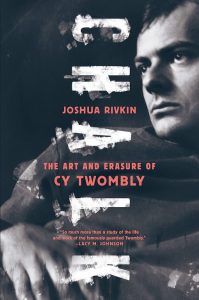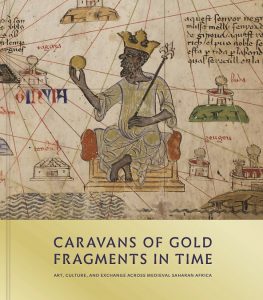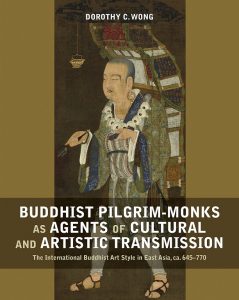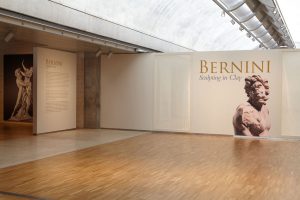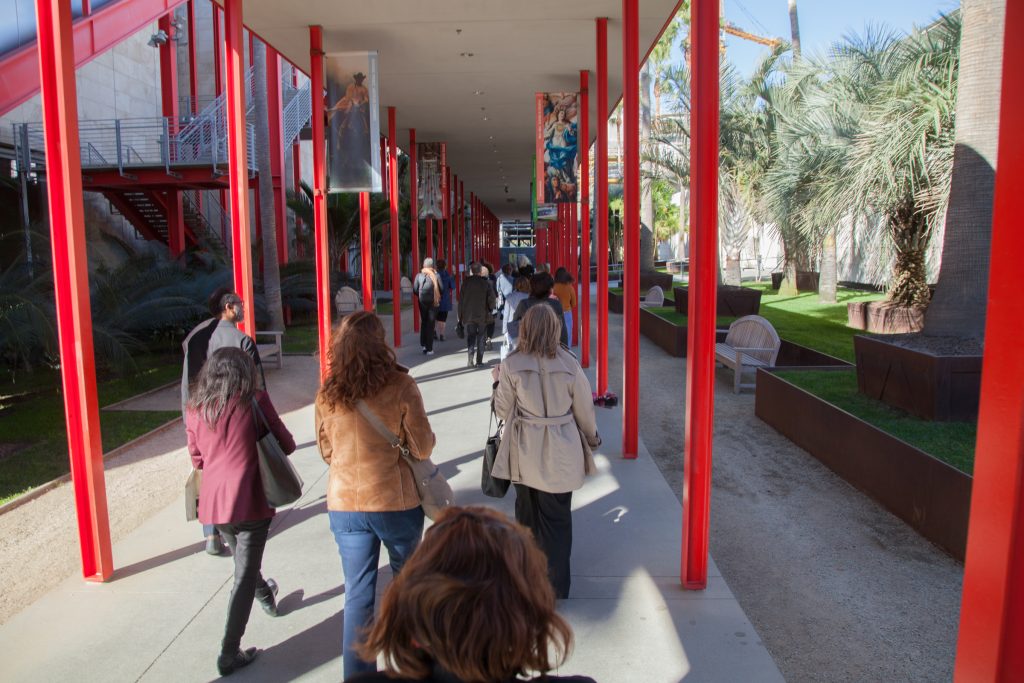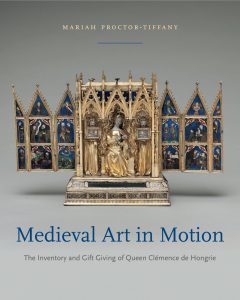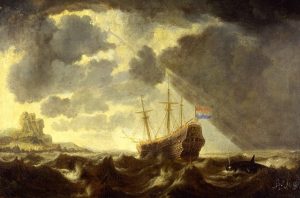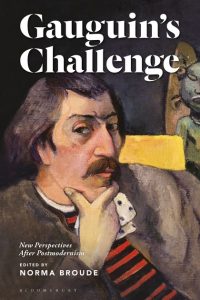CAA News Today
Has Your Membership Lapsed? Rejoin This November and Save
posted by CAA — October 31, 2019
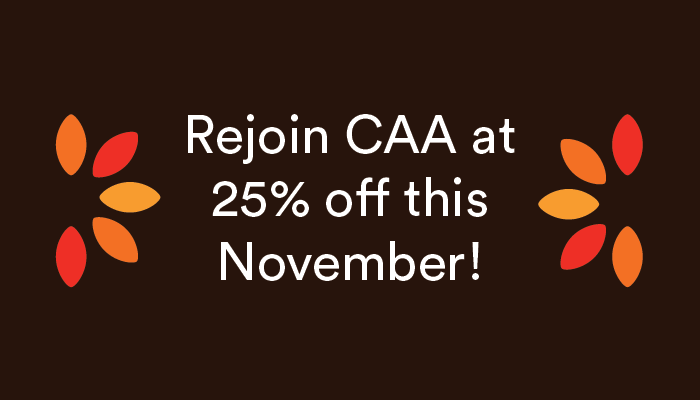
Offer valid November 1, 2019–November 30, 2019
November is the perfect time to rejoin CAA. We know your membership has lapsed, but we want you back! For the month of November, lapsed members will receive 25% off their membership.
We’re about to unveil the full schedule for the 2020 Annual Conference in Chicago, February 12-15, 2020. Registration for the Annual Conference opened October 1 and we look forward to a robust program this February. If you haven’t been to a conference recently, we’ve launched a number of new programs, including Idea Exchange and Professional Development Workshops, designed to provide professional support and networking opportunities.
New grants for funding research and travel are now available. We recently announced that we will be administering the Terra Foundation for American Art Research Travel Grants, and we just opened the application portal for the Art History Special Exhibition Travel Fund, which awards up to $10,000 to students and faculty for museum exhibition travel in connection with their studies.
CAA is growing and changing all the time, working to support the arts and humanities and all professionals in the field.
| RENEW YOUR MEMBERSHIP |
There has never been a better time to rejoin CAA!
We look forward to seeing you at the 108th CAA Annual Conference in Chicago, February 12-15, 2020.
| REGISTER NOW |
News from the Art and Academic Worlds
posted by CAA — October 30, 2019
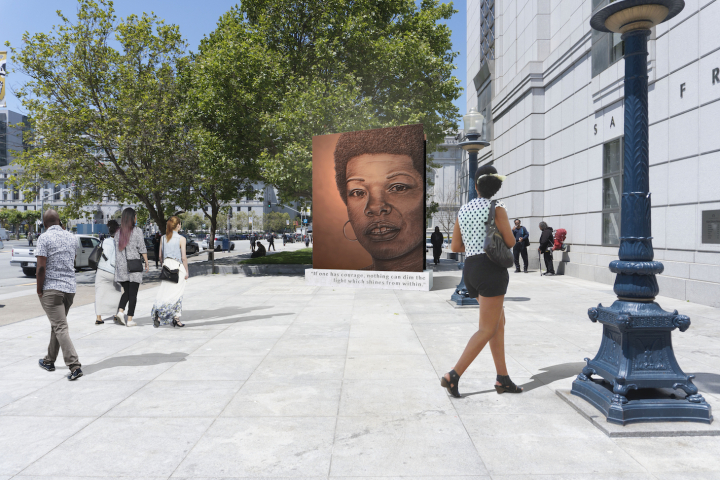
Rendering of Lava Thomas’s proposed Maya Angelou monument, “Portrait of a Phenomenal Women.” Image courtesy Eren Hebert/Hyperallergic.
In San Francisco, a Design for Maya Angelou Monument Is Approved, Then Suddenly Scrapped
Artist Lava Thomas’s work was selected, and subsequently rejected, for a monument outside the main branch of the San Francisco Public Library. (Hyperallergic)
Definitive Proof Nobody Did Costume Parties like the Bauhaus
Some Halloween inspiration from the Bauhaus, where costume party competition was fierce. (Curbed)
House Democrats Unveil Plan to Make College More Affordable
The new legislation would update the Higher Education Act of 1965 for the first time in more than a decade, at an estimated cost of $400 billion over 10 years. (New York Times)
Displaying, Not Hiding, the Reality of Slave Labor in Art
Museums are working to incorporate the impact of slavery in exhibitions and permanent collections in a way not commonly done a decade ago. (New York Times)
Want articles like these in your inbox? Sign up:
An Interview with Kellie Jones, 2020 CAA Distinguished Scholar
posted by CAA — October 28, 2019
We are delighted to welcome Dr. Kellie Jones, professor in Art History and Archaeology and the Institute for Research in African American Studies (IRAAS) at Columbia University, as the Distinguished Scholar for the 108th CAA Annual Conference in Chicago, February 12-15, 2020.
Dr. Jones, whose research interests include African American and African Diaspora artists, Latinx and Latin American Artists, and issues in contemporary art and museum theory, is the recipient of awards from the Hutchins Center for African and African American Research, Harvard University, Creative Capital, and Warhol Foundation, among others. In 2016, she was named a MacArthur Foundation Fellow. In 2018, Dr. Jones was the inaugural recipient of the Excellence in Diversity Award from CAA.
CAA media and content manager Joelle Te Paske spoke with Dr. Jones earlier this fall to learn about what she’s working on and looking forward to in upcoming exhibitions and scholarship. Read the interview below.
This interview has been edited for length and clarity.
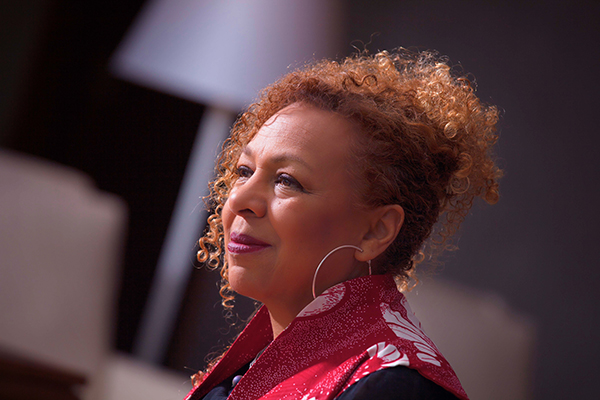
Dr. Kellie Jones. Photo: Rod McGaha
Hi, Professor Jones. Thank you for taking the time for this interview. It’s an honor to speak with you and we’re excited that you’ll be with us in Chicago.
I’m looking forward to it.
Great. So to begin—to locate ourselves in time and place—how are you? How was your summer?
It’s always fun, and it always ends too quickly. I think that’s just normal. [Laughs]
Yes, I guess that’s where we should be at this point [laughs]. Were you working on a particular project this summer?
Yes. I was working on a project for Center for Advanced Study in the Visual Arts (CASVA). Huey Copeland of Northwestern University and Steven Nelson of UCLA are spearheading a Black Modernisms seminar with a group of scholars. I just finished an essay on the Harlem Renaissance that is still to be titled. I haven’t written extensively on that period so I’m really looking forward to hearing back from them. It involves race and gender and I’m very excited about it.
What else is exciting in your work right now?
Candida Alvarez: Here, A Visual Reader (Green Lantern Press 2019), the first major monograph on the Chicago-based painter, is about to hit shops. I’m excited by this project to which I contributed the essay, “When Painting Stepped Out to Lunch.” I have book that I’m finishing on global conceptual art networks that is tentatively titled Art is an Excuse, on how conceptual art allowed for different types of global connections. One great example is Senga Nengudi and her relationship to Japan which is something I’ve written about earlier but I wanted to more forthrightly connect to Japanese conceptualism. So how does Senga Nengudi fit into that dialogue, or what is her dialogue? I’m thinking about conceptual art as a motor for global art connection, different from what people call globalization—more like artist dialogues, not neoliberal globalization.
A macro view.
The book is more about relationships. We always think about artists in their particular nationalist space. What did Japanese conceptualism look like? What did Latin American conceptualism look like? How were they different? But we really don’t talk about the kind of dialogue that people have with each other. That’s really the whole premise of the project.
That’s terrific. I read that for undergrad at Amherst College you made an interdisciplinary major. I was going to ask: Has an interdisciplinary outlook been formative in your career? But I feel you’re already embodying that.
You’re absolutely right. I created an interdisciplinary major at Amherst. Shout out to my alma mater and to liberal arts education.
We love that at CAA, yes.
And we love it because it allows people to see the breadth of the world in some fashion and then choose something or choose a few things. I’m one of the people that thought about Latin American and African American and Latinx artists at least from my college years, and I’ve been going with that for the longest, along with ideas of the African diaspora. You might start out with “Let’s compare”—the comparative structure; the binary is such a signature of art history. But then you realize that it’s so much more than a just a binary—the interdisciplinarity, the multidisciplinarity. That’s always been a part of what I’ve looked at because at that time—and I know I’ve said it on numerous occasions in numerous platforms—art history was really taught one way. Because I had grown up in New York I said, “But wait a minute, they’re leaving out all of these people that are making art that I know!” That I see every week. I mean, how is that possible? So I started there and just kept going.
I also read that you wanted to be a diplomat originally, and that makes sense to me. I think art historians are often part-diplomats, part-detectives, part-scientists. There’s so much that goes into the field.
Absolutely. I wanted to get away from art. I grew up with artists and poets and I said, “Oh my god, these people are broke. I can’t do that.”
Well, that’s realistic—I suppose it’s changed, too.
It’s absolutely changed, but if you’re thinking about late 1970s—wow. People weren’t even thinking about objects too much.
Someone reminded me much later—maybe a couple of years ago—they said, “Well you know, you’ve been doing [diplomacy] with art. You’ve been a cultural ambassador with this work, because you’ve done shows around the world.” Art history became, “Wow, you can do the same things.” You can study languages. You can travel. It did become a way you could do all those things, and then of course as you just mentioned, as a curator you are a diplomatic entity between artists and the institution.
As a liaison, definitely. It’s sensitive.
Right. Even as an academic, if you’re traveling around or if you’re representing a contemporary artist in your writing—how do you balance how the artist sees themselves with what you have to say? There’s always that.
I’m curious what you see as emerging trends in scholarship, especially in art history.
I think students and academics—particularly a new generation—don’t want traditional art history as we have known it. They want a more interdisciplinary, multidisciplinary, global understanding of art in the world. Art history is not just Europe, and it’s not just the United States. And the art of the United States meaning not just New York!
I think the other really exciting arena is, of course, gender. Gender studies. Queer studies in art history. Trans studies. All those things really change how we understand the object, how we understand history, the histories that we look for. There’s a similarity to the discoveries that I made when I was a student in college about how art history at that time did not represent even the histories of African Americans who were in New York, for instance. United States art history is written from a New York-centric perspective. And at that time, you didn’t see too many women in it. You didn’t see too many African Americans or Latinx figures. So now that such subjects are more widely known the next step seems to be to ask,”What is a queer art history?” And some people have been doing this for a while: Jonathan Weinberg, James Smalls, Julia Bryan-Wilson has brought us into the present with some of these ideas, and C. Ondine Chavoya with his Axis Mundo, project. So all these ideas are becoming more visible and I think it’s really exciting.
That’s one of the reasons why I’ve been so keen on my Harlem Renaissance article. It started out in one way, and then it took me in another direction; it takes another look at objects that have been dismissed as not being relevant, and sees them through a different lens. It opens up other paths into these works that have been discarded. Or maybe not discarded, but put to the side. Let’s ask, “What’s going on with gender in these works?” What’s going on with queerness, and how do they signify to a Harlem Renaissance that is quite queer? It’s something people in literature have discovered, certainly in the African American context, and they’ve been talking about that for years. Art history has to catch up.
Yes, you feel a real energy in the field, a real hunger for it. With recent protests around Warren Kanders at the Whitney Museum, what are your views on that momentum? [Editor’s note: Since this conversation took place, Warren Kanders announced his resignation from the Whitney Museum board.]
Well, you know, there have always been protests at US museums as well as those around the world. So whether you are a curator or a director who bares the brunt of the protest, or you are an artist who withdraws, you’re part of history. Scholars down the road are going to say, “These people pulled out. These people wrote a letter. These were the curators. These were the board members.” So for me it’s just part of history, and it has ebbs and flows. There are a lot of things going on in this world that artists are addressing, that artists see. They do respond to the world in one way or another. You may not see it visibly, but it’s there.
I agree. I think putting new ideas in the world the way artists do is cultural change, and like you said—it’s interconnected. You can’t really have one without the other.
Yes. It’s part of a larger history.
When did you first join CAA? Do you have a favorite memory from a conference?
I had joined CAA by 1990, when I served as the co-chair of the programming at the Annual Meeting for the Studio or Artists’ sessions with Robert Storr. I’ve been on plenty of panels since then, but to be honored in this way is humbling and exciting. Even better, all of the respondents I asked to participate on the Distinguished Scholar panel said, “Yes! I’ll be a part of it.” So I’m thrilled about that. I’ve been at Columbia University about 13 years, and I remember when Rosalind Krauss was honored, and I participated in Richard J. Powell’s Distinguished Scholar panel. So to step into those shoes, it seems a bit surreal.
Thinking of Chicago in 2020—do you have a favorite art-related excursion there?
Well, the South Side Community Art Center is legendary. It’s one of the original community art centers from the New Deal era, and it’s still in existence. I would definitely say go to that. That’s my favorite.
I’m marking it down for myself. Are there exhibitions coming up this fall that you recommend?
Senga Nengudi at Lenbachhaus in Munich; Robert Colescott at the Contemporary Art Center in Cincinnati curated by Lowery Sims and Matthew Weseley; Lynette Yiadom-Boakye at Yale Center for British Art curated by Hilton Als; Hank Willis Thomas: All Things Being Equal…, his first major survey at the Portland Art Museum. Curator Meg Onli at ICA Philadelphia has done a trio of shows under the title Colored People Time. The final component Banal Presents will be on view through December 22, 2019.
Shows that are further out that I’m excited about are Prospect 5 in New Orleans (Fall 2020), curated by Naima Keith and Diana Nawi. The citywide triennial in New Orleans is just a great experience. Everyone should check it out. Thomas Lax’s exhibition on Just Above Midtown gallery, that generative space of 1970s and 1980s, and its founder Linda Goode Bryant, will be wonderful to see at MoMA in 2022.
There are so many great young curators out here. Rujeko Hockley, Erin Christovale, numerous others. Tiona Nekkia McClodden is an artist who’s been doing some great archival curatorial work. She had a show that was in response to the anniversary of Mapplethorpe’s The Perfect Moment that just closed. There are just so many great people out here doing some wonderful things, and a lot of wonderful younger artists. I’m excited by it. We started out by talking about multidisciplinarity, interdisciplinarity—young curators are invested in that idea as much as scholars.
Oh and one thing that I’m really looking forward to down the line is, of course, the reopening of the Studio Museum in Harlem. I cannot wait for that!
Yes! It’s a ways off but that’s an exciting one. Well, thank you Dr. Jones. I appreciate you taking the time, and it’s been a pleasure to speak with you.
Thanks for your questions, and again it’s really an honor to be a part of this whole thing. I still kind of can’t believe it. I guess I will in February when I step off that plane!
The Distinguished Scholar Session honoring Kellie Jones will take place Thursday, February 13, 2020, from 4-5:30 PM at the Hilton Chicago, Grand Ballroom.
Biography of Dr. Kellie Jones
Dr. Kellie Jones is a Professor in Art History and Archaeology and African American and African Diaspora Studies at Columbia University. Her research interests include African American and African Diaspora artists, Latinx and Latin American Artists, and issues in contemporary art and museum theory.
Dr. Jones, a member of the American Academy of Arts and Sciences, has also received awards for her work from the Hutchins Center for African and African American Research, Harvard University and Creative Capital | Warhol Foundation. In 2016 she was named a MacArthur Foundation Fellow.
Dr. Jones’s writings have appeared in a multitude of exhibition catalogues and journals. She is the author of two books published by Duke University Press, EyeMinded: Living and Writing Contemporary Art (2011), and South of Pico: African American Artists in Los Angeles in the 1960s and 1970s (2017), which received the Walter & Lillian Lowenfels Criticism Award from the American Book Award in 2018 and was named a Best Art Book of 2017 in The New York Times and a Best Book of 2017 in Artforum.
Dr. Jones has also worked as a curator for over three decades and has numerous major national and international exhibitions to her credit. Her exhibition “Now Dig This! Art and Black Los Angeles, 1960-1980,” at the Hammer Museum, Los Angeles, was named one of the best exhibitions of 2011 and 2012 by Artforum, and best thematic show nationally by the International Association of Art Critics (AICA). She was co-curator of “Witness: Art and Civil Rights in the 1960s” (Brooklyn Museum), named one the best exhibitions of 2014 by Artforum.
Danielle Wyckoff and AnnieLaurie Erickson
posted by CAA — October 28, 2019
The weekly CAA Conversations Podcast continues the vibrant discussions initiated at our Annual Conference. Listen in each week as educators explore arts and pedagogy, tackling everything from the day-to-day grind to the big, universal questions of the field.
CAA podcasts are on iTunes. Click here to subscribe.
This week, Danielle Wyckoff and AnnieLaurie Erickson discuss professional practices.
Danielle Wyckoff is an assistant professor at the Kendall College for Art and Design at Ferris State University in Grand Rapids, Michigan.
AnnieLaurie Erickson is an associate professor of photography and co-director of Studio Art Graduate Studies at Tulane University.
New in caa.reviews
posted by CAA — October 25, 2019
Fred Rush discusses Chalk: The Art and Erasure of Cy Twombly by Joshua Rivkin. Read the full review at caa.reviews.
Elizabeth Perrill reviews the catalog and exhibition Caravans of Gold, Fragments in Time: Art, Culture, and Exchange across Medieval Saharan Africa in its showing at Northwestern University’s Block Museum of Art. Read the full review at caa.reviews.
Anne N. Feng writes about Dorothy C. Wong’s volume Buddhist Pilgrim-Monks as Agents of Cultural and Artistic Transmission: The International Buddhist Art Style in East Asia, ca. 645–770. Read the full review at caa.reviews.
caa.reviews highlights an in-depth multimedia project from its archives, by former editor-in-chief Sheryl E. Reiss, on the monumental exhibition Bernini: Sculpting in Clay. Explore the interactive project through the link at caa.reviews.
News from the Art and Academic Worlds
posted by CAA — October 23, 2019
Four Art Experts Analyze That Historic Nancy Pelosi vs. Donald Trump Photo
CAA member Nika Elder, assistant professor of American art at American University; Angela Mack, executive director and chief curator at the Gibbes Museum of Art; and Chloe Esslemont and Mayanne Soret, coeditors of Tabloid Art History, weigh in. (Vogue)
UC Berkeley Art Museum Inherits Grand Trove of Nearly 3,000 African American Quilts
The gift will, “in one fell swoop, add 15% to the museum’s permanent collection” at the Berkeley Art Museum & Pacific Film Archive. (San Francisco Chronicle)
Formal Analysis Cannot Occlude the Real Issues’: How Curators Are Addressing Gauguin’s Dark Side
Curators are grappling with the artist’s sexually predatory behavior more openly than ever in a major exhibition at the National Gallery in London. (artnet News)
How Artists Are Weathering the Student Debt Crisis
“It’s important for people to talk about their debt, create a community around it, and crush the misconception that people in debt ‘have behaved irresponsibly, and that their debt is their fault alone.'” (Artsy)
Want articles like these in your inbox? Sign up:
Now Accepting Applications for the Art History Fund for Travel to Special Exhibitions
posted by CAA — October 22, 2019
In August 2018, we announced that CAA had received a major anonymous gift to fund travel for art history faculty and their students to special exhibitions related to their classwork. After a successful inaugural year, we’re pleased to now be accepting applications for the second grant cycle of the Art History Fund for Travel to Special Exhibitions.
The fund is designed to award up to $10,000 to qualifying undergraduate and graduate art history classes to cover students’ and instructors’ costs (travel, accommodations, and admissions fees) associated with attending museum special exhibitions throughout the United States and worldwide. The purpose of the grants is to enhance students’ first-hand knowledge of original works of art.
Applications are due by January 15, 2020.
GUIDELINES
- These awards support student and instructor travel costs incurred while visiting museum special exhibitions in the United States and worldwide.
- Graduate and undergraduate art history classes are eligible to apply for funds to attend temporary museum exhibitions in the United States and other countries. Travel to see permanent collections is not eligible, nor would be performances and related ephemeral events. Exhibitions on any artist, period, or area of art history are eligible for funding.
- Awards are made directly to institutions whose institutional membership in CAA is in good standing.
- Applicant instructors must have individual membership in CAA and be in good standing.
- Funds may only be used to travel to exhibitions that correspond directly to the content of the class.
- The size of the class for which a grant may be awarded shall not be larger than fifteen (15) students.
- Awards may only be used for admission fees, travel and lodging expenses for the instructor and class members. Every attempt to attain group rates must be made.
Completed applications must include the following:
- Instructor’s curriculum vitae
- A course description and syllabus that identifies and explains the exhibition as part of the pedagogical aim of the course – Be sure to detail how the visit is integrated into the course (up to 500 words)
- An explanation of the instructor’s expertise in the subject matter of the exhibition (up to 250 words)
- A tentative itinerary of travel and lodging (up to 250 words)
- A budget detailing transportation and lodging expenses associated with traveling to and from the exhibition and lodging and admission costs, including an explanation of how any travel and accommodation funds in excess of the award will be raised
- A letter of support from the instructor’s department chair or dean
CRITERIA
- How well the exhibition fits within the pedagogical aim of the course.
- The scholarly merit of the exhibition.
- Financial need. Would the class not be able to visit the exhibition, otherwise?
AWARDS
Awards will not exceed $10,000 per class, per exhibition.
All travel must be completed between June 2020 – May 2021.
REPORTING
Awardees must submit a report of up to 1,000 words which explains in detail the benefits received and problems encountered in the course of travel to the exhibition for which support was received.
*Reports must be submitted to CAA no later than two months after the completion of travel.
ANNUAL CONFERENCE
Recipients of the award will be guaranteed a session at the subsequent CAA Annual Conference after their travel has ended. CAA will make the session available, but costs associated with attending the conference, including registration, membership, travel, and accommodation, will be the participants’ responsibility.
TIMELINE
The deadline for application materials is January 15.
Krista Svalbonas and Greta Pratt
posted by CAA — October 21, 2019
The weekly CAA Conversations Podcast continues the vibrant discussions initiated at our Annual Conference. Listen in each week as educators explore arts and pedagogy, tackling everything from the day-to-day grind to the big, universal questions of the field.
CAA podcasts are on iTunes. Click here to subscribe.
This week, Krista Svalbonas and Greta Pratt discuss the challenges of teaching photography today.
Krista Svalbonas (b. 1977, USA) holds a BFA Photography (Syracuse University) and an MFA Interdisciplinary(SUNY New Paltz). Her work has been exhibited in a number of exhibitions including at the Utah Museum of Contemporary Art, Howard Yezerski Gallery in Boston, Klompching Gallery, and ISE Cultural Foundation in New York. Her work has been collected in a number of private collections, as well as the Cesis Art Museum in Latvia. Recent awards include the Rhonda Wilson Award (2017), Puffin Foundation Grant (2016), and a Bemis Fellowship (2015), among others. In 2015 Svalbonas exhibited a solo installation at the Spartanburg Art Museum in South Carolina. She is an assistant professor of photography at St. Joseph’s University. She lives and works in Philadelphia.
Greta Pratt is a photographer concerned with issues of national identity and American myth. Pratt is the author of three monographs, The Wavers (Blue Sky Books, 2014), Using History (Steidl, 2005), and In Search of the Corn Queen (National Museum of American Art, 1994). Pratt’s work is included in major public and private collections and has been shown in Art in America, New York Times Sunday Magazine and The New Yorker, along with numerous books and catalogs nationally as well as internationally. She was nominated for a Pulitzer Prize and is a recipient of a New Jersey State Arts Council Grant. Pratt is a professor of photography at Old Dominion University in Norfolk, Virginia where she heads the photography department.
New in caa.reviews
posted by CAA — October 18, 2019
Marian Bleeke reviews Mariah Proctor-Tiffany’s book Medieval Art in Motion: The Inventory and Gift Giving of Queen Clémence de Hongrie. Read the full review at caa.reviews.
Amy Golahny writes about the exhibition De Wind Is Op! Climate, Culture and Innovation in Dutch Maritime Painting, currently on view at the New Bedford Whaling Museum in Massachusetts. Read the full review at caa.reviews.
Caroline Boyle-Turner discusses Gauguin’s Challenge: New Perspectives after Postmodernism, edited by Norma Broude. Read the full review at caa.reviews.
RAAMP Coffee Gathering: Designing a Collection Plan
posted by CAA — October 16, 2019
RAAMP (Resources for Academic Art Museum Professionals) Coffee Gatherings are monthly virtual chats aimed at giving participants an opportunity to informally discuss a topic that relates to their work as academic art museum professionals.
Coffee Gathering: Designing a Collection Plan
On Tuesday, October 22 at 3 PM (EST), RAAMP’s online Coffee Gathering will focus on the process of creating collection plans in academic art museums. Through a series of questions, we will explore who should be involved in creating a collection plan, what information it should provide, and who it should serve. In discussing these topics, we hope to have related conversations about the challenges and opportunities creating a collection plan can provide staff and institutions.
This topic has emerged from the curious lack of publicly available collection plan examples. We hope to provide colleagues in academic art museums the opportunity to connect and share their experiences with writing collection plans.
Questions we will discuss include:
- What sections should be included?
- How does the collection plan integrate others, such as the university’s strategic plan, interpretive plan, and/or collections management policy?
- Who should be involved in creating the document?
- How might an academic art museum include their various communities in the process?
- With colleagues in your museums, how do you successfully have conversations on how to limit or focus a collection, especially at an encyclopedic museum?
- How might this document be helpful for donors?
- Do you share your collection plan publicly?
- How often do you revisit and revise your collection plan?
To RSVP to this online coffee gathering, please email Olivia Knauss at oknauss@collegeart.org
Submit to RAAMP
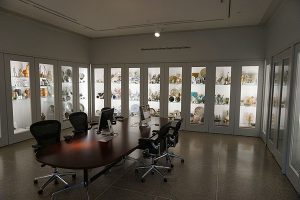
The Albertine Monroe-Brow study-storage gallery at the University of Michigan Museum of Art.
RAAMP (Resources for Academic Art Museum Professionals) aims to strengthen the educational mission of academic art museums by providing a publicly accessible repository of resources, online forums, and relevant news and information. Visit RAAMP to discover the newest resources and contribute.
RAAMP is a project of CAA with support from The Andrew W. Mellon Foundation.



